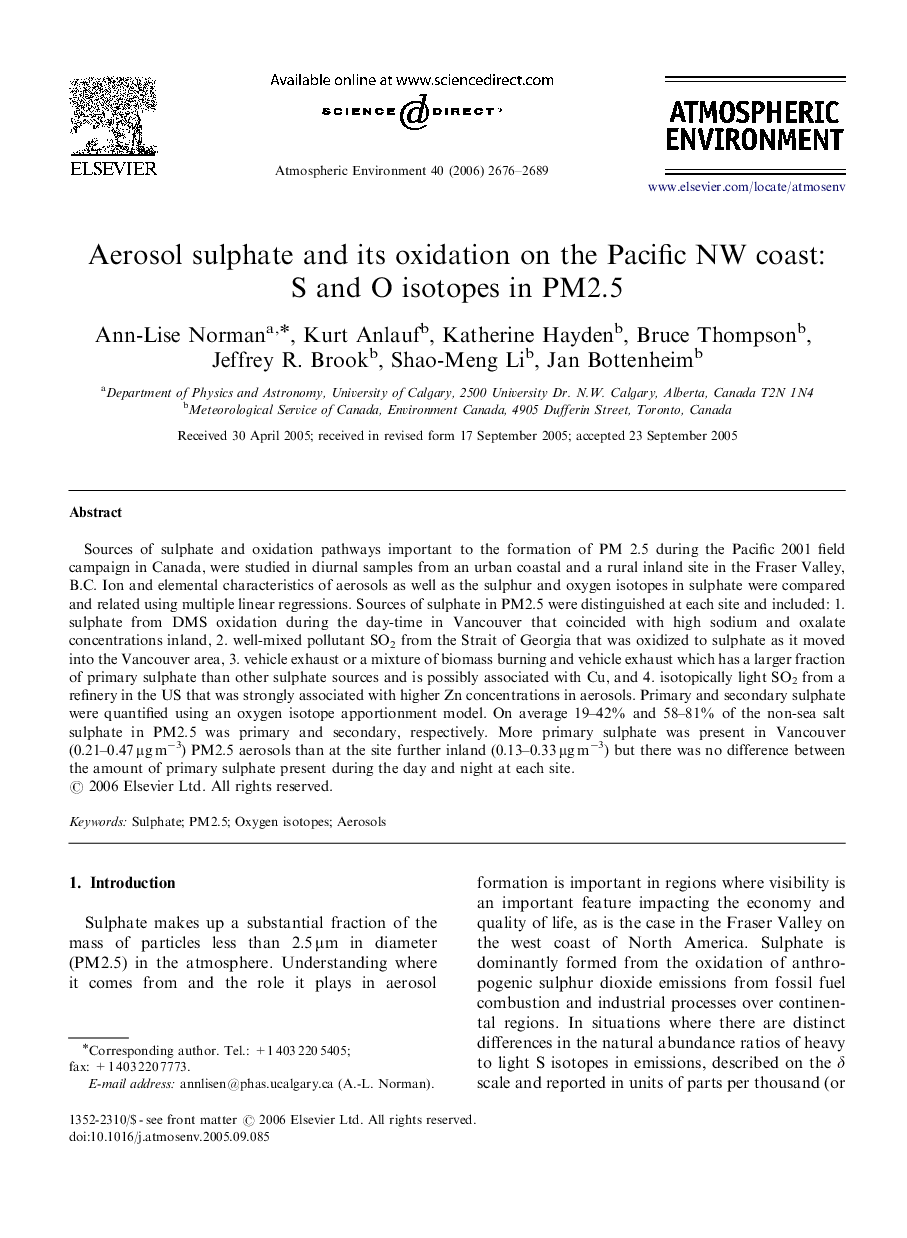| Article ID | Journal | Published Year | Pages | File Type |
|---|---|---|---|---|
| 4444946 | Atmospheric Environment | 2006 | 14 Pages |
Sources of sulphate and oxidation pathways important to the formation of PM 2.5 during the Pacific 2001 field campaign in Canada, were studied in diurnal samples from an urban coastal and a rural inland site in the Fraser Valley, B.C. Ion and elemental characteristics of aerosols as well as the sulphur and oxygen isotopes in sulphate were compared and related using multiple linear regressions. Sources of sulphate in PM2.5 were distinguished at each site and included: 1. sulphate from DMS oxidation during the day-time in Vancouver that coincided with high sodium and oxalate concentrations inland, 2. well-mixed pollutant SO2 from the Strait of Georgia that was oxidized to sulphate as it moved into the Vancouver area, 3. vehicle exhaust or a mixture of biomass burning and vehicle exhaust which has a larger fraction of primary sulphate than other sulphate sources and is possibly associated with Cu, and 4. isotopically light SO2 from a refinery in the US that was strongly associated with higher Zn concentrations in aerosols. Primary and secondary sulphate were quantified using an oxygen isotope apportionment model. On average 19–42% and 58–81% of the non-sea salt sulphate in PM2.5 was primary and secondary, respectively. More primary sulphate was present in Vancouver (0.21–0.47 μg m−3) PM2.5 aerosols than at the site further inland (0.13–0.33 μg m−3) but there was no difference between the amount of primary sulphate present during the day and night at each site.
